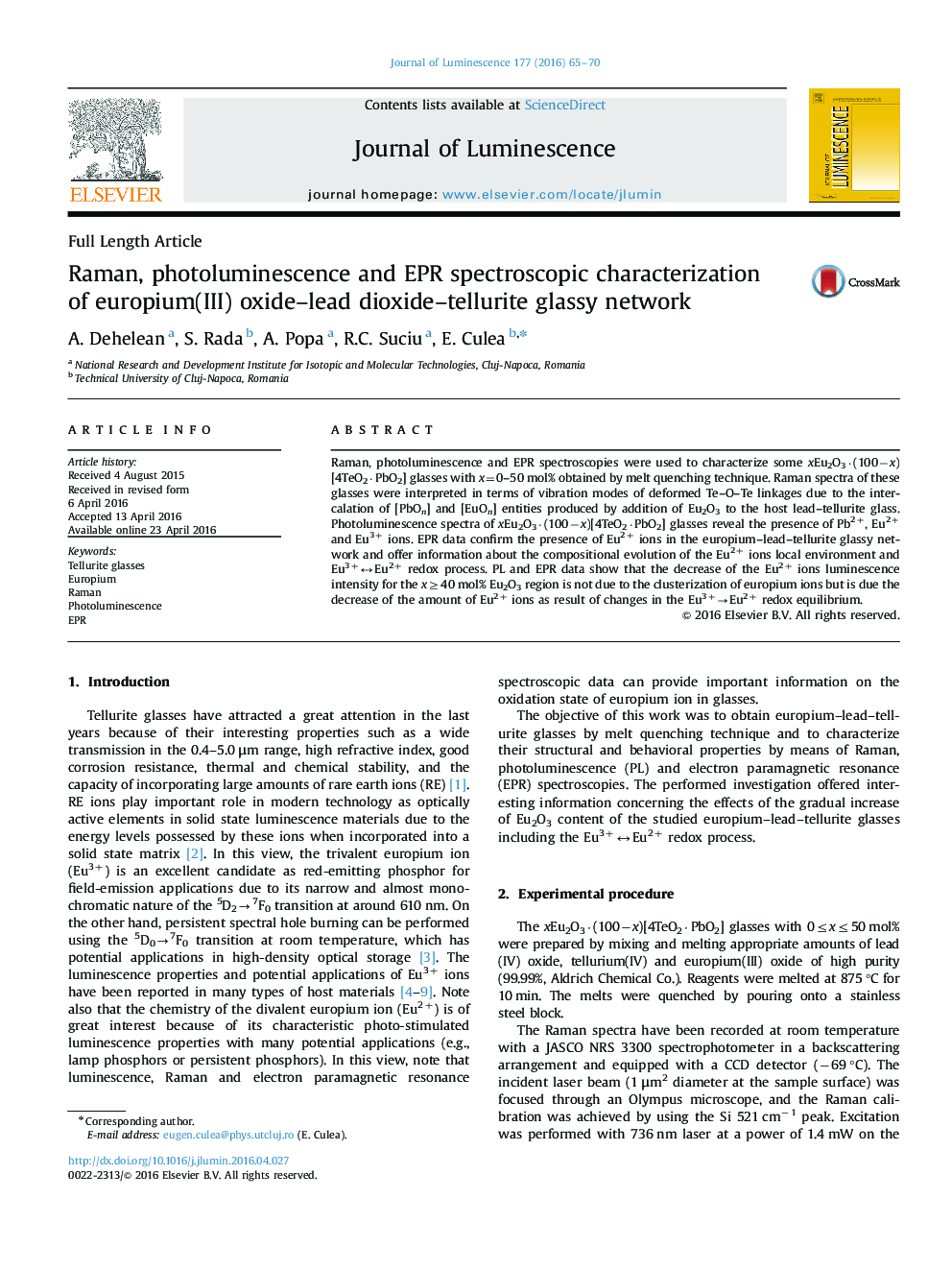| Article ID | Journal | Published Year | Pages | File Type |
|---|---|---|---|---|
| 5398553 | Journal of Luminescence | 2016 | 6 Pages |
Abstract
Raman, photoluminescence and EPR spectroscopies were used to characterize some xEu2O3·(100âx)[4TeO2·PbO2] glasses with x=0-50 mol% obtained by melt quenching technique. Raman spectra of these glasses were interpreted in terms of vibration modes of deformed Te-O-Te linkages due to the intercalation of [PbOn] and [EuOn] entities produced by addition of Eu2O3 to the host lead-tellurite glass. Photoluminescence spectra of xEu2O3·(100âx)[4TeO2·PbO2] glasses reveal the presence of Pb2+, Eu2+ and Eu3+ ions. EPR data confirm the presence of Eu2+ ions in the europium-lead-tellurite glassy network and offer information about the compositional evolution of the Eu2+ ions local environment and Eu3+âEu2+ redox process. PL and EPR data show that the decrease of the Eu2+ ions luminescence intensity for the xâ¥40 mol% Eu2O3 region is not due to the clusterization of europium ions but is due the decrease of the amount of Eu2+ ions as result of changes in the Eu3+âEu2+ redox equilibrium.
Related Topics
Physical Sciences and Engineering
Chemistry
Physical and Theoretical Chemistry
Authors
A. Dehelean, S. Rada, A. Popa, R.C. Suciu, E. Culea,
